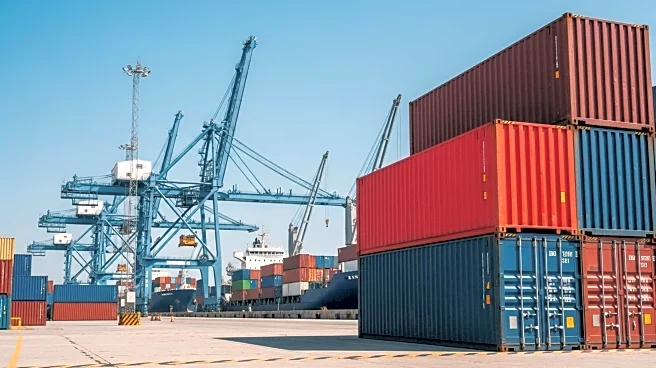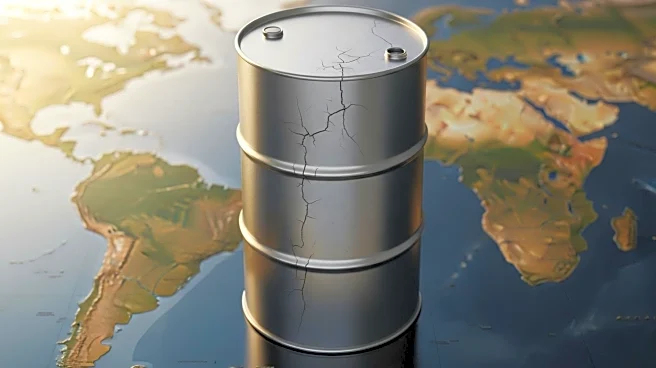What is the story about?
What's Happening?
OPEC+ is expected to maintain its current oil production levels during its upcoming meeting, as the group evaluates market conditions and potential price trends following a recent increase in output. The Organization of the Petroleum Exporting Countries and its allies have resumed 2.2 million barrels per day (bpd) of previously suspended production. However, the International Energy Agency (IEA) has warned of a looming global oversupply, projecting that supply will exceed demand by nearly 3 million bpd by 2026. This imbalance is attributed to increased production from both OPEC+ and non-OPEC producers, including the U.S., Canada, Brazil, and Guyana. Despite the growing supply, global demand growth is expected to remain subdued, with the IEA revising its 2025 forecast to 680,000 bpd, down from earlier estimates.
Why It's Important?
The decision by OPEC+ to maintain current production levels is significant as it reflects a strategic pause to monitor the impact of recent production adjustments on crude prices and market dynamics. Oil prices have already fallen by about 9% this year, benefiting consumers, particularly in the U.S., where President Trump has advocated for lower fuel costs. However, the price decline poses revenue risks for oil-producing nations, especially those in the Gulf. The ongoing tension between maintaining market share and avoiding a glut that could further depress prices and revenues highlights the delicate balance OPEC+ must navigate.
What's Next?
OPEC+ officials have indicated that part of the production ramp-up was aimed at regaining market share lost to non-OPEC producers during earlier years of cutbacks. Analysts suggest that OPEC+ may ultimately be forced to reintroduce production cuts in 2026 to prevent a significant surplus. The group's decision in October will be closely watched by traders and analysts, as it could signal future adjustments in production strategy.
AI Generated Content
Do you find this article useful?















